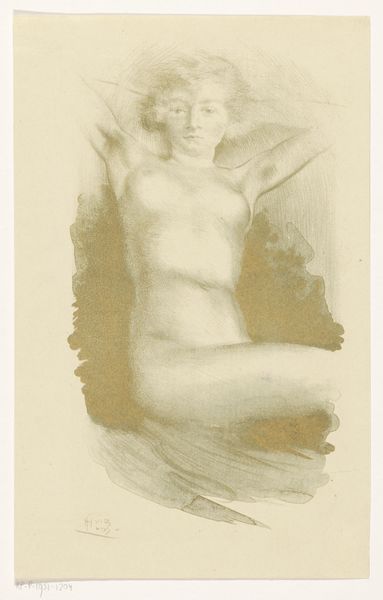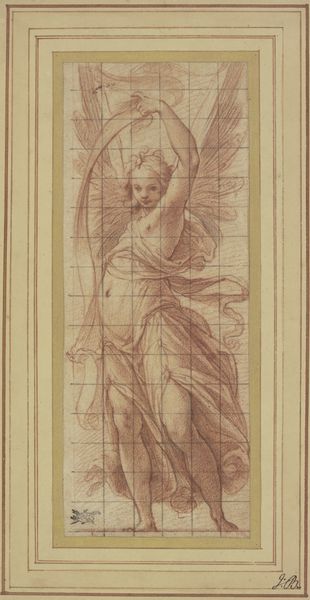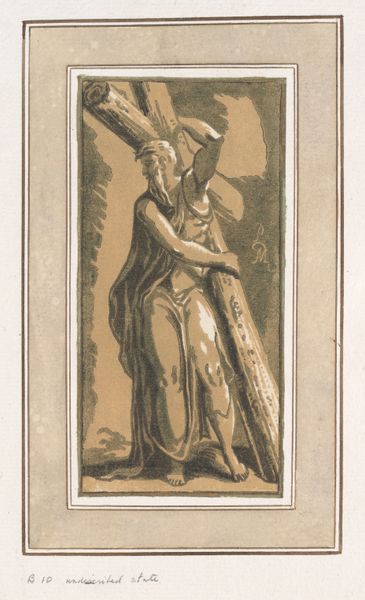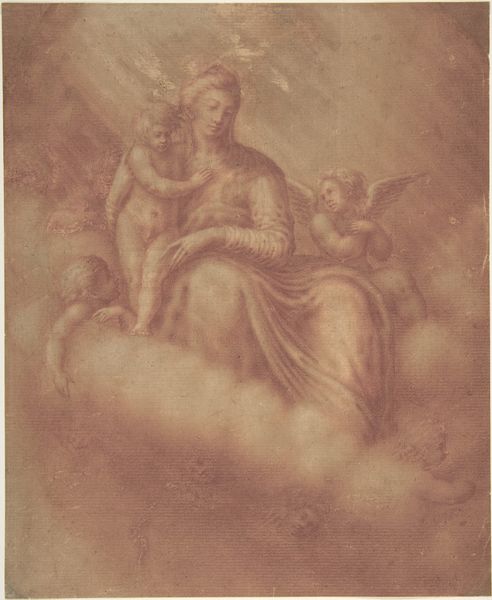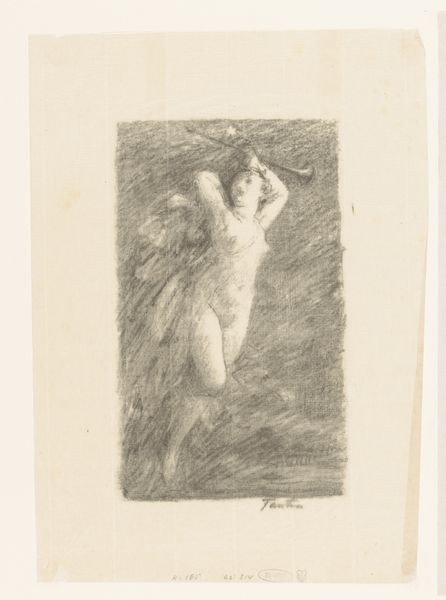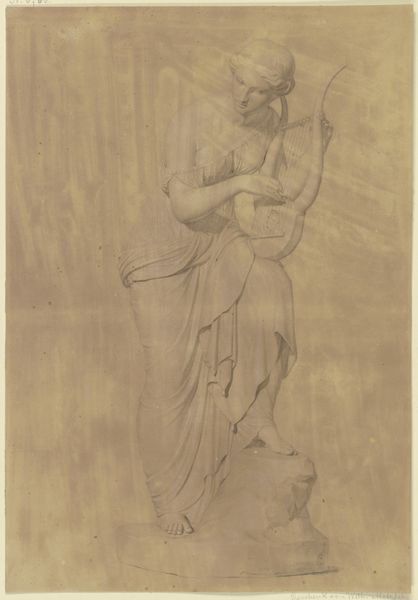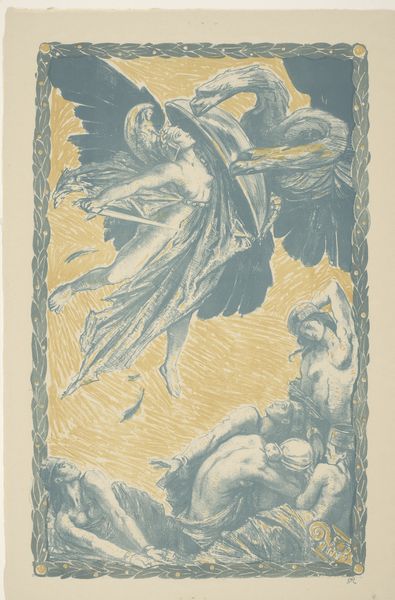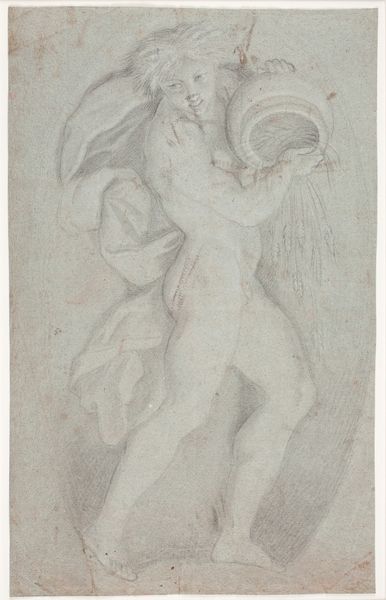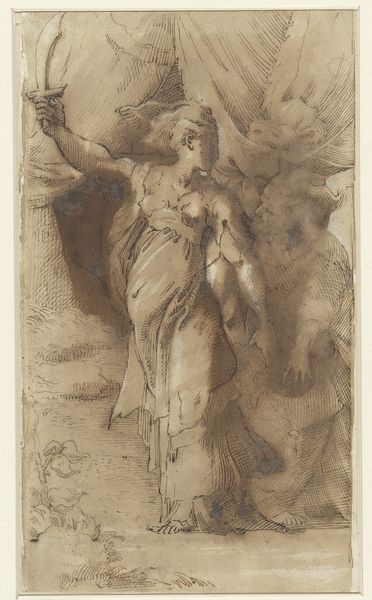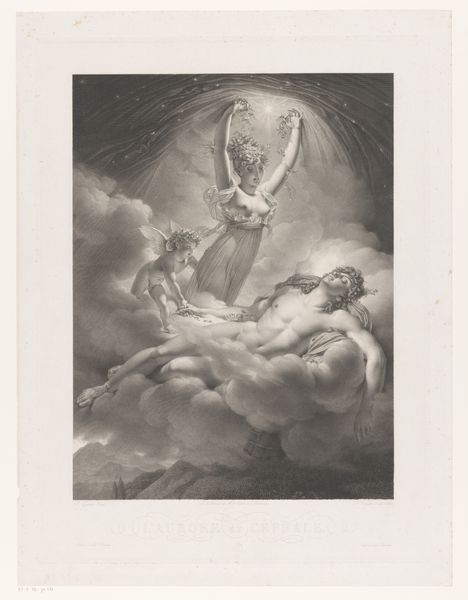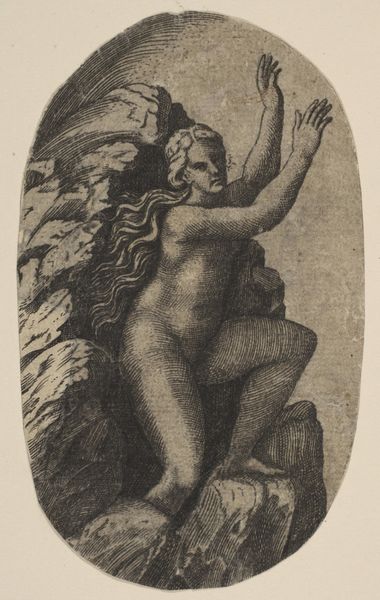
drawing, print
#
drawing
# print
#
charcoal drawing
#
figuration
#
group-portraits
#
symbolism
#
portrait drawing
#
nude
Dimensions: height 390 mm, width 281 mm
Copyright: Rijks Museum: Open Domain
Curator: This intriguing drawing is titled "Drie naakte Nornen," which translates to "Three Naked Norns." It was created by Huib Luns sometime between 1891 and 1931, and we’re fortunate enough to have it here at the Rijksmuseum. Editor: Well, first impression – it's ethereally beautiful. It’s like a dream half-remembered, all hazy light and figures emerging from a golden mist. There's a delicate balance between presence and absence. What exactly are "Norns"? Curator: In Norse mythology, the Norns are female beings who determine destiny. They’re often depicted as weavers of fate, and Luns captures that sense of mystery perfectly. Note how he uses charcoal to create this sense of ambiguity, those soft edges and indistinct forms that add to its ethereal quality. Editor: I can see that now. There’s a sense of profound contemplation. The central figure, bathed in more light than the others, appears burdened by knowing too much, staring out beyond the frame of the picture itself. Are they a group portrait, or perhaps something else? Curator: The "group-portrait" aspect relates to the style of the picture, but the true subject and the "Norns" reference anchors it within Symbolism, a late 19th-century artistic movement which sought to express emotional experience through symbolic images. So rather than portraying actual individuals, Luns likely used the Norns as a vehicle to explore universal themes like destiny and the passage of time. The artistic movements of the time are closely connected to an ideal of spiritual rebirth and questions around societal modernity. Editor: So it’s not just about pretty drawings but trying to give physical form to powerful emotions, or deep reflections on philosophical subjects, as the turn of the century approached. Makes you wonder what preoccupied Luns’ mind during those decades as society underwent colossal transformations. There's definitely a melancholic beauty here, a quiet resignation in the face of, well, fate. It's pretty moving. Curator: Precisely. It allows us to contemplate forces shaping human existence within this Symbolist framework, making it more than just a visually arresting image, and more of a visual rumination. Editor: A visual poem then, in sepia tones. Thanks. I need a moment. Curator: My pleasure. Hopefully, this inspires everyone to reflect on their individual experience within life's great tapestry.
Comments
No comments
Be the first to comment and join the conversation on the ultimate creative platform.
